
WHY DO I NEED A BLOOD TRANSFUSION?
Every year, almost 4.5 million Americans receive a blood product, resulting in almost 11 million transfusions.
There are many different reasons for a blood product transfusion, including disease, injury, surgery, and chemotherapy.
The most commonly transfused blood products are red blood cells, platelets, plasma, cryoprecipitate, and, rarely, white blood cells.
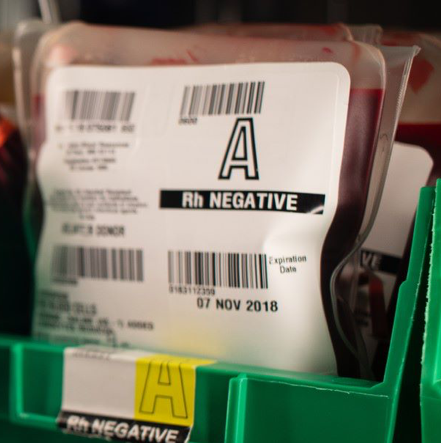
Red Blood Cells
Red blood cells transport oxygen throughout the body.
This is the most common type of transfusion.
They are given when the number of red blood cells in the bloodstream gets below a certain level or when certain symptoms (such as fatigue, shortness of breath, or racing heart) appear.
Typical reasons for a red blood cell transfusion include injury, surgery, bleeding, anemia, childbirth, and chemotherapy.
Medical personnel sometimes use the term “RBCs” to refer to this treatment.
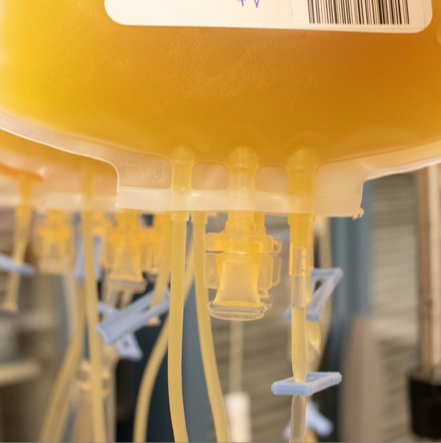
Platelets
Platelets help stop bleeding.
They are given when the number of them in your bloodstream gets below a certain level or when certain symptoms (such as easy bruising or slow clotting) appear.
Typical reasons for a platelet transfusion include severe bleeding, low production rate (often a side effect of cancer chemotherapy), rapid usage in the body, and poor effectiveness or function (often a result of taking “blood thinners”).

Plasma
Plasma is the liquid part of the blood in which the blood cells and platelets float.
It contains mostly proteins that are involved in many of the body’s functions, including providing nutrition, stopping bleeding, and fighting infections.
It is given to replace lowered levels or missing proteins in blood.
The most common reasons for a plasma transfusion include excessive bleeding and lowered amounts of the proteins that stop bleeding.
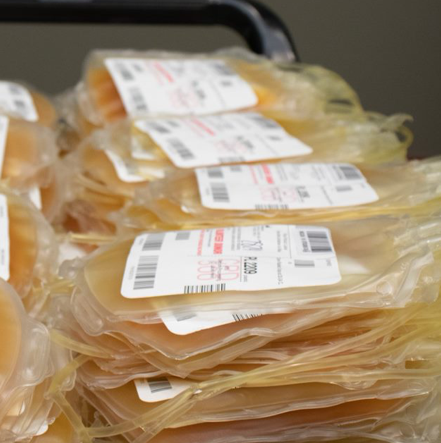
Cryoprecipitate
Cryoprecipitate is the solid substance that appears when frozen plasma is thawed in a refrigerator.
It is almost entirely made up of a few specific proteins that are important in stopping bleeding.
Cryoprecipitate is typically given during excessive bleeding or when certain proteins that stop bleeding (called “Factors”) are low.
For further information about why cancer patients may need blood, please click here:
Sources: https://mytransfusion.com.au/sites/default/files/I_need_to_know_about_cryoprecipitate_0.pdf

White Blood Cells
White blood cells are the cells that fight infections in the body.
It is very rare for these to be transfused.
They are typically given when someone has a low white blood cell count and he or she has a severe infection that is not getting better with a variety of antibiotics.
Red Blood Cells
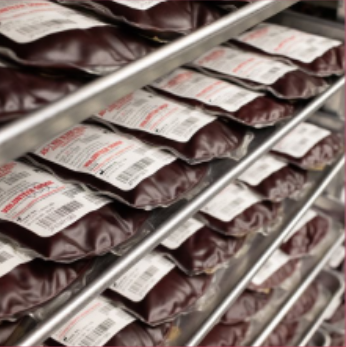
Red blood cells transport oxygen throughout the body. This is the most common type of transfusion. They are given when the number of red blood cells in the bloodstream gets below a certain level or when certain symptoms (such as fatigue, shortness of breath, or racing heart) appear. Typical reasons for a red blood cell transfusion include injury, surgery, bleeding, anemia, childbirth, and chemotherapy. Medical personnel sometimes use the term “RBCs” to refer to this treatment.
Platelets

Platelets help stop bleeding. They are given when the number of them in your bloodstream gets below a certain level or when certain symptoms (such as easy bruising or slow clotting) appear. Typical reasons for a platelet transfusion include severe bleeding, low production rate (often a side effect of cancer chemotherapy), rapid usage in the body, and poor effectiveness or function (often a result of taking “blood thinners”).
Plasma

Plasma is the liquid part of the blood in which the blood cells and platelets float. It contains mostly proteins that are involved in many of the body’s functions, including providing nutrition, stopping bleeding, and fighting infections. It is given to replace lowered levels or missing proteins in blood. The most common reasons for a plasma transfusion include excessive bleeding and lowered amounts of the proteins that stop bleeding.
Cryoprecipitate

Cryoprecipitate is the solid substance that appears when frozen plasma is thawed in a refrigerator. It is almost entirely made up of a few specific proteins that are important in stopping bleeding. Cryoprecipitate is typically given during excessive bleeding or when certain proteins that stop bleeding (called “Factors”) are low. For further information about why cancer patients may need blood, please click here: https://www.cancer.org/treatment/treatments-and-side-effects/treatment-types/blood-transfusion-and-donation/what-are-transfusions.html
Sources: Click Here
White Blood Cells

White blood cells are the cells that fight infections in the body. It is very rare for these to be transfused. They are typically given when someone has a low white blood cell count and he or she has a severe infection that is not getting better with a variety of antibiotics.
THE PROCESS
Learning about the process helps you understand the time involved in preparing for and undergoing the transfusion and educates you about what you can do to make yourself more comfortable.

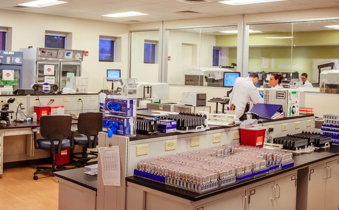
BLOOD COMPATIBILITY
Your blood type is determined from a sample of blood drawn from your arm. Your sample is also screened for other factors (called antibodies) that can cause a transfusion reaction.
TRANSFUSION RISKS
Before donating, a thorough questionnaire must be completed. It includes questions about a donor’s health and their risk factors for infection, for example, travel history, drug use, and sexual behavior. Those who are at a high risk for infection are not allowed to donate. After donation, the blood is tested for infections.
Download the

TIPS FOR COMFORT
Blood transfusions are often necessary for improving a patient’s health. With a little planning and information, you can improve your overall transfusion experience.
If you have found ways to improve your transfusion experience, share it with us.
STAY COMFORTABLE

- Request a bed instead of a chair for maximum comfort
- Ask if they have reclining chairs with massagers and heat
- Request pillows and blankets to stay warm and cozy
- Eat a snack or have something to drink
STAY WARM

- Request a blood warmer. Red blood cells and plasma can be very cold when flowing into the body and may cause chills, arm cramping, and other discomforts. A blood warmer is a device that gently warms the blood as it travels through the IV (intravenous) tubing. Most hospitals and clinics should have this equipment, although patients seldom request it.
- If a blood warmer is not available, an electric blanket can be an alternative to stay warm.
STAY DISTRACTED

- Watch your favorite television show
- Use personal electronic devices
- Read a good book
- Bring a friend or family member to pass the time
PREVENT SIDE-EFFECTS

- Ask your doctor if receiving an antihistamine would be right for you. Sometimes patients experience hives such as itchy skin or swelling when getting blood, especially platelets or plasma. Taking Benadryl or similar medication can relieve this condition. If you have had hives with previous transfusions, ask to have an antihistamine prior to your getting your next unit (“premedication”).
- Do not take any antihistamines without consulting your physician in advance.